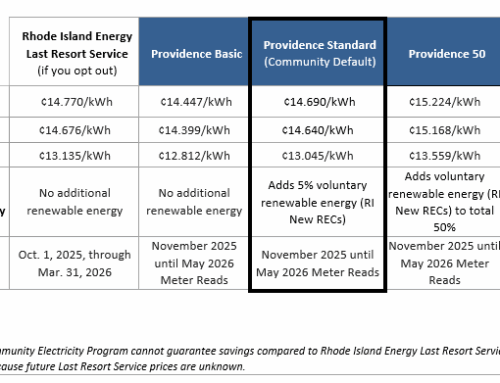Government shutdown means 90% of EPA staff won’t be working
October 1, 2025
The shutdown of the U.S. government could have ripple effects for human health and the environment as an already weakened Environmental Protection Agency will see nearly all of its staff furloughed and many of its operations paused.
The first shutdown in six years went into effect late Tuesday and requires federal agencies to stop all nonessential work. Most EPA work is considered only partially essential under federal rules.
Nearly 90% of EPA staff will be furloughed; only 1,732 of 15,166 employees will report to work, according to the agency’s most recent shutdown contingency plan, issued in September.
Immediate environmental hazard work is likely to continue, but longer-term efforts such as research, permitting, writing new rules and pollution enforcement will largely freeze.
Experts note that the shutdown comes as the agency already has seen significant cuts as part of the Trump administration’s efforts to restructure the federal government and save taxpayers money. About 4,000 EPA employees, or a quarter of its workforce, have been fired or have taken a buyout this year.
“The shutdown has already been happening for months,” said Marc Boom, a former senior policy advisor with the EPA who now serves as senior advisor with the Environmental Protection Network, a bipartisan group of more than 700 former EPA employees based in Washington, D.C.
Many activities will halt, including research and the publication of research results, and the issuance of new grants, contracts and permits, according to the agency. Critically, civil enforcement inspections — on-site visits to facilities to check their compliance with environmental regulations — will also cease.
Whether cleanup work at hazardous waste areas known as Superfund sites will continue will be decided case by case. At sites where stopping would pose an imminent threat to human life, work will continue, but at others, it will pause, according to the agency.
Preparing for, preventing and responding to environmental disasters such as oil spills and chemical releases, known as emergency response readiness operations, will not stop. Freezers, animals, plants and other assets in research labs will continue to be maintained.
In a statement to The Times before the shutdown, EPA officials blamed Democrats for the quagmire and said the agency will continue to strive to meet its mission. The impasse came as Democrats demanded healthcare provisions in the budget while Republicans pushed for a short-term budget extension without policy changes.
“Congressional Democrats are not only unwilling to vote for a clean funding bill, but their goal is to inflict as much pain on the American people as possible,” the EPA said. “Americans made their voices heard last November; Democrats must respect the will of the people. … EPA will work to fulfill our statutory obligations, emergency response efforts, and Administration priorities.”
But the agency has already lost considerable expertise through its staff cuts and restructuring, which have lessened its ability to respond to both emerging and existing threats, according to Linda Birnbaum, former director of the National Institute for Environmental Health Sciences and the National Toxicology Program.
“The additional loss of people will essentially take us to a point where EPA will be almost unable to complete its mission,” Birnbaum said in a statement.
Since Trump took office in January, the EPA has canceled hundreds of environmental grants; rolled back protections against pesticides, forever chemicals and fossil fuel emissions; issued exemptions for large polluters, eliminated its office of Research and Development and announced plans to repeal the endangerment finding, which affirms that greenhouse gases are harmful to human health and the environment, among other efforts.
The furloughs at EPA could become permanent. A recent memo from the federal Office of Management and Budget directed federal agencies to prepare for mass layoffs in the event of a government shutdown, implying people may not be rehired.
“If you’ve already cut the staff by 4,000 and more is to come from the shutdown and from further [reductions in force], then there will be even less protections,” said Vicki Arroyo, a former EPA associate administrator for policy who served under both the Biden and Reagan administrations.
Arroyo recalled the challenges of maintaining the agency’s core functions during the last federal shutdown six years ago, when she was the only one of about 160 people on her team who remained at work. Duties such as economic analyses, permitting for energy projects such as offshore wind and National Environmental Policy Act reviews were among those to suffer, she said, and could be hit even harder this time around.
“When EPA funding and staffing are undercut, it doesn’t just hurt these public servants, it hurts us all,” Arroyo said. “Without a functioning EPA, we can’t trust that the water out of our tap is safe … and without EPA staff on duty, we can’t rely on EPA to monitor and protect air quality so that children without asthma and others with respiratory conditions are safe from pollution.”
She and other experts also feared that less support and oversight from the federal government would result in diminished quality control at the local level, as many federal laws are delegated to states.
In California, much will depend on the length of the shutdown, according to H.D. Palmer, spokesman for the California Department of Finance. A shutdown lasting only a few days would probably have minimal effect on the California EPA.
Specifically, Palmer said many California environmental programs that were funded under the Biden administration should be able to continue even if there is a brief lapse in appropriations, such as brownfield project grants and the state’s Clean Water State Revolving Fund. However, a protracted shutdown could lead to delays in new project grants or permits being issued.
“We’re going to continue to assess it depending on how long this thing goes on,” Palmer said.
The EPA is not the only environmental agency that will face challenges. The U.S. Forest Service, the Federal Emergency Management Agency, the National Oceanic and Atmospheric Administration and the National Park Service are also bracing for interruptions under the shutdown in addition to cuts this year.
Search
RECENT PRESS RELEASES
Related Post



